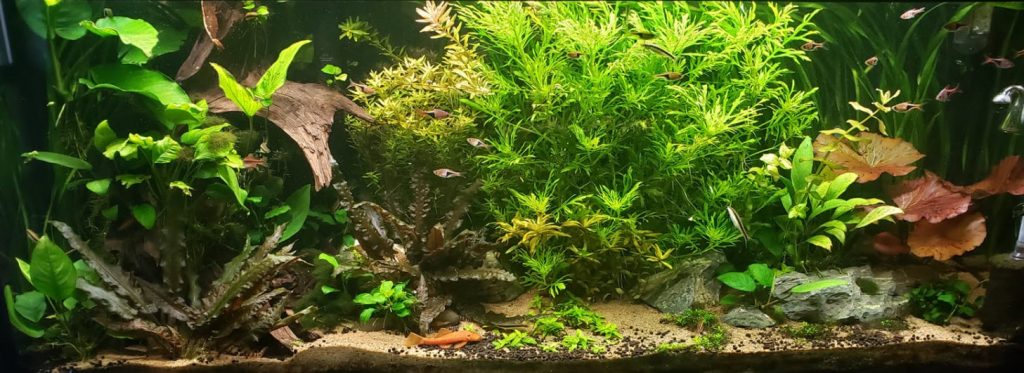
This is an in depth analysis of how and why to obtain crystal clear water. It is only for real nerds like the author.
Crystal clear water is, in general, the product of several factors:
- At least 100 square foot of biomedia surface area per pound of fish
- A reasonable turnover rate in the aquarium in GPH through the filter
- At least two months of filter operation with no cleaning
- At least 30 square inches of turbulent air/water interface per pound of fish
- Food with a protein level of at least 45%
Now this of course is a very simplistic analysis. There are hundreds of variables which will affect this and the cumulative effect of all these variables can be huge. But these are the main variables and the things most easily controlled by an aquarium owner.
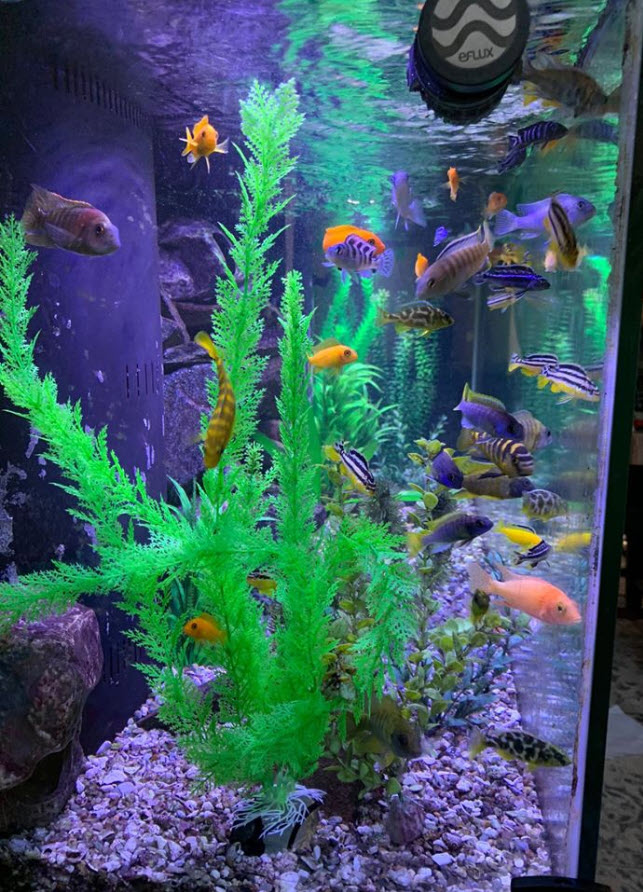
Filter Media Surface Area
The filtration media effective surface area is the single most important factor in crystal clear water. The various filter media were tested in the following article:
7.1.3. Filter Media Test
There are many ways to interpret this test. For our purposes here let’s ask the question: “How many five inch mbuna can a typical canister, filled with this media alone, handle and give crystal clear water?”
A typical large canister might have 3 gallons of submerged biomedia in it. The calculations for five inch mbuna become:
- X = # 5 inch fish at 82 grams each
- Y = Cubic inches of media per 100 square feet
- 454 grams per pound per 100 square feet
- 231 cubic inches per gallon
- 3 x 231 = 693 cubic inches available
- X = (693 in3 x 454 gms)/(Y in3 x 82 gms) = 3,836/Y

Using the cubic inches per pound data derived elsewhere we come up with the following five inch mbuna stocking for a large canister which give crystal clear water:
- Foam 8
- Pot scrubbers 6
- Static K1 6
- Matrix, Lava Rock 1
- Biohome and Ceramic Rings 0
This is some huge differences! So a large canister filled with say Matrix, Bioballs and ceramic rings might give crystal clear water with 1 mbuna in the aquarium. A large canister filled with pot scrubbers and static K1 can give crystal clear water with 7 five inch mbuna in the tank.
The filter media in the FX canisters is half to two thirds foam by design, thus the excellent water clarity typically found in aquariums with the FX canisters on the aquarium. Note that a typical sump will have anywhere from five to ten times the capacity of even a large canister. This is why I use sumps on all my larger aquariums. Note that an undergravel filter in a 55 gallon tank can give crystal clear water with 6 five inch fish.

Water Flow
Water has to flow at a reasonable rate over the filter media in order for the beneficial bacteria to do their work. But this flow rate is less important than one might assume from all the hype about it. There is a number where water flow becomes what is termed “turbulent flow” (it is called “Reynold’s Number”). This is very difficult to calculate for something as complex as a filter media.
But let’s say for discussion purposes at one inch per second flow rate over a given filter media one would get turbulent flow. Then below one inch per second you won’t get crystal clear water and above one inch per second you will get crystal clear water. It is a black and white situation, with little in the way of gray. Virtually all filters will exceed the Reynold’s Number in their media and will thus give a decent flow situation.
A far more telling statistic than flow rate is the volume of media the canister has in it. This piece of data is no longer reported on canister filter review sites. In order to find it out one has to multiply the height by the width by the length of the filter. This volume is very important as the available surface area goes up directly with the volume of the filter media.
Note that if the flow of water through the filter media is too rapid, then a good biofilm/brown gunk structure will not form and the water can oftentimes remain cloudy. Predicting at what point this will occur is just impossible. There are too many variables. But if a mature tank absolutely refuses to give crystal clear water, look long and hard at the flow rate through the filter media. Is brown gunk forming in the media?
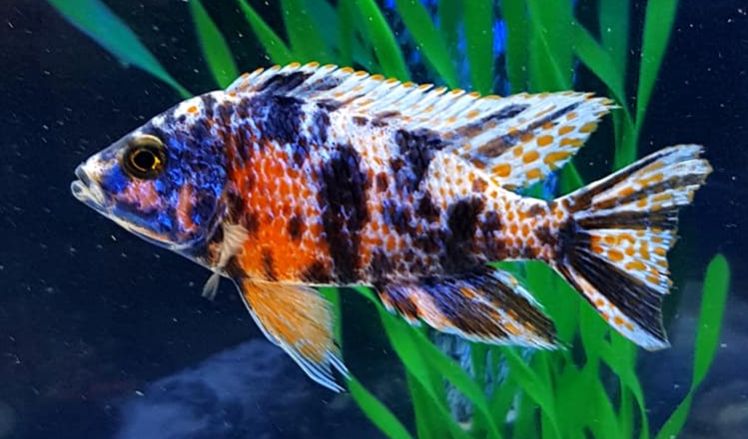
Time for the Filter to “Mature”
The additional factor is the amount of time the biofilm and brown gunk in the filter has had to mature. The biofilm and brown gunk structure takes time to develop, about two to six months. In this time frame the biofilm and brown gunk matures into a rough brown structure full of nooks and crannies that can trap small floating bacteria and the like. What is important is that one never destroys this structure by doing a thorough cleaning of the biofiltration media.
There are a whole host of organisms which are present the biofilm of any filter over a few months old which hasn’t been cleaned. These organisms polish the water very effectively. A reference is helpful: “Agricultural Waste Management in Food Processing”, Hansen, 2019
“Protozoa such as Vorticella, Opercularia, and Epistylis and rotifers do not stabilize waste but they consume dispersed bacteria and small biological floc particles that have not settled; that is, protozoa and rotifers act as effluent polishers.”
A test was done on thorough cleaning of a filter media and the test showed that even a relatively light cleaning destroyed the cycle. This test can be reviewed by clicking on the following link:
6.8. Thorough Cleaning
‘
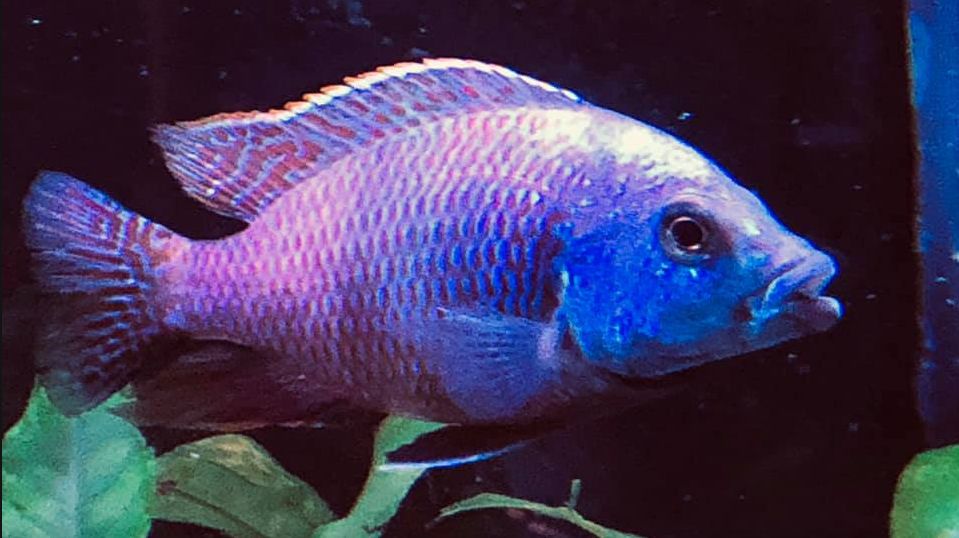
How do the Experts Do it?
Joey (the King of DIY aquariums) uses a huge amount of biofiltration (100 gallons of fluidized bed!) to achieve crystal clear water on his huge ray and arowana aquarium. Note Joey also has two large canister filters and a UV light on his large aquarium so he’s doing a huge amount of filtration on that aquarium.
Ben Ochart obtains crystal clear water with two huge canister filters and a moderate bioload on his smaller aquarium (predator haps from Lake Malawi). When the biofiltration volumes are huge for the poundage of fish, the water will typically be crystal-clear after a few months of operation. Ben also uses pinkie pads in his canisters which he changes out once a week.
“Half-man Half-cichlid” uses huge amounts of Poret foam in his sumps to give his huge aquariums incredible clear water.
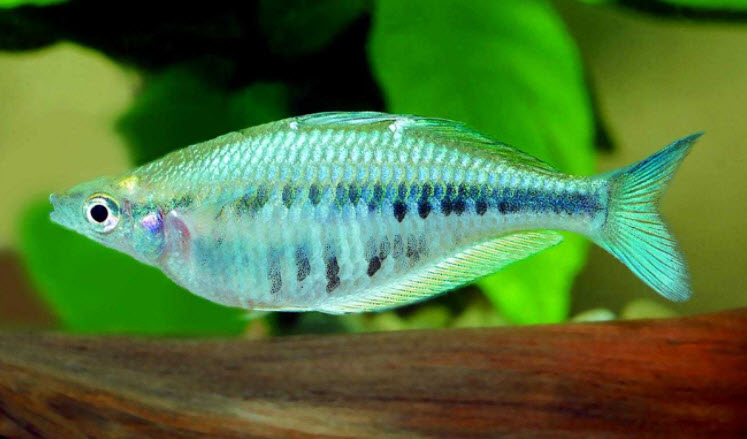
How do the Non-experts Not do it?
There are huge numbers of videos on YouTube with fishkeepers who use hang on back filters or canister filters filled with the media they came with. NONE of these aquariums have crystal-clear water. All of them have at least slightly cloudy water (the “dull” look). The surface area of the media in these filters just is insufficient to give superb water clarity.
This dullness or cloudiness can also be due to frequent cleaning of the filter media. Newcomers often think that a clean filter will give clean water, which is exactly the opposite of what is true. One often sees on social media questions like “My filters get cleaned once every two weeks so why is my water cloudy?”. The water is cloudy BECAUSE the person is cleaning their filter every two weeks.
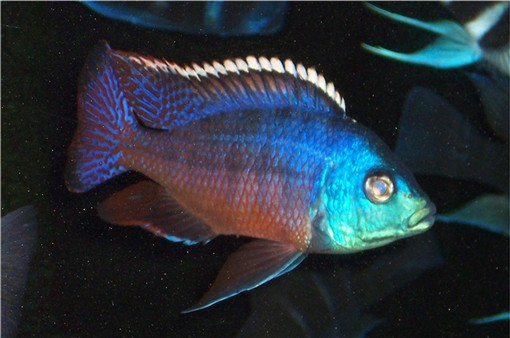
Crystal Clear Water and Fish Health
What is often missed in this discussion the importance of crystal-clear water. It goes beyond aesthetics. The usual reason the water isn’t crystal-clear is because of heavy numbers of bacteria in the slightly cloudy water (along with algae, protozoans and diatoms).
The fish’s immune system is constantly fighting all the bacteria that the gills are exposed to regardless of the type of bacteria. So a lower bacterial count means more immune system resources available for fighting off pathogens. A high bacteria concentration will compromise the immune systems of the fish and can cause any number of disease and pathogen breakouts. All owners of aquariums should strive for crystal-clear water.
Note that “bacteria free” is relative. A milliliter (or cubic centimeter) of dull, “normal” aquarium water will have roughly ten million or 107 bacteria. A milliliter of cloudy water can easily have ten billion or 1010 bacteria. And a milliliter of “crystal clear” water can have as little as 100,000, or 105 bacteria in it. This gives one an idea as to why reducing the bacterial count can be so effective in improving the immune systems of the fish.
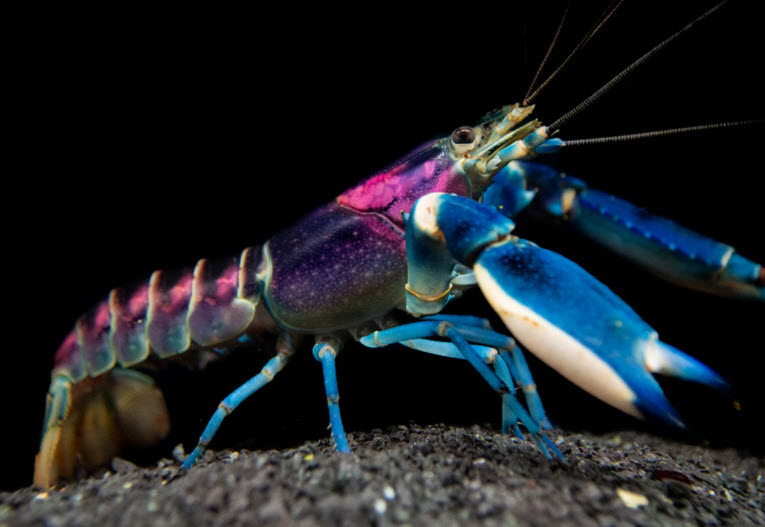
If the bacteria count in the water column is low the fish can put all their immune system resource towards keeping pathogens at bay. So fish in bacteria free water are far more healthy that fish in bacteria laden water.
.
The Key to Good Fish Health is Clean, Bacteria Free Water
.
Note that , contrary to popular myth, this does NOT mean water which is changed frequently. Going from ten million bacteria to five million bacteria isn’t going to be that much help to the fish. Large water changes cannot compensate for poor filtration.
More about this topic can be found at the following link:
4.3. Bacteria in the Water Column
‘

UV Sterilization
If a UV unit is used at a rate of one watt for every ten gallons, the slower reproducing organisms in the water column are “killed” as they pass through the UV unit. Technically most of the slower growing organisms are only prevented from replicating by UV but that is the same as killing for math purposes.
When these organisms are killed by the UV the number of infusoria and algae in the water column are reduced and eliminated, sometimes quite rapidly. These organisms are not filtered out by the UV. But the result is the same, namely reasonably clear water. UV can give crystal-clear water only if it is accompanied by a reasonable filter with a reasonable filter media in the filter.
But UV is limited in that it does not remove something called “DOCs” or “dissolved organic compounds”. Dissolved organic compounds are captured by bacteria living on the surface of filter media and eliminated. So filtration can eliminate DOCs. UV does not affect DOCs. Since DOCs are the food that bacteria in the water column feed on it is important to eliminate them to produce truly “crystal clear” water.
And a lot of dissolved organic compounds in the water can fuel fast replicating bacteria which are NOT controlled by UV. If all the water passes through the UV every twenty minutes and there are enough DOCs that heterotrophic bacteria can reproduce every fifteen minutes, then this bacteria will not be well controlled.
More about UV can be found at this web page:
14.1.1. UV in Depth
‘
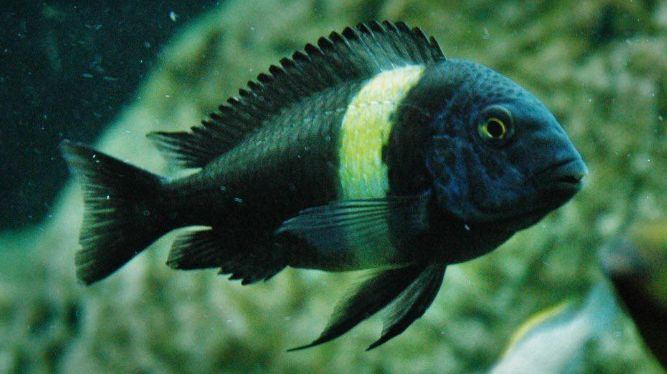
Fish Food and Water Clarity
The fish food used has a distinct effect on water clarity. Commercial dry foods with simple carbohydrates from wheat, corn and potatoes is very detrimental to water clarity. The simple carbohydrates in leftover food are very rapidly metabolized into bacteria which can rapidly cloud the water. A high protein food such as spinach or fish filet is much slower to metabolize, resulting in clearer water.
Flake food produces much more uneaten waste food in the water column than pellet food. Therefore use of flake food can prevent crystal clear water.

Polishing Filtration
It is also possible to obtain “somewhat” clear water by using something like Polyfil polyester floss to do “polishing” filtration. This is the physical removal of particle the eye can see by mechanical filtration. This course of action is difficult to do as in the relatively dirty water of an aquarium the filtering media will rapidly plug, requiring frequent maintenance and replacement.
Polishing filtration will typically remove particles down to about 200 microns in size. Since most microscopic infusoria are less than 200 microns in size and bacteria are 2 to 10 microns in size, the small organisms which produce “cloudy water” aren’t very effectively removed by polishing filtration.
And polishing filtration has the same shortcoming that UV has, namely that it cannot eliminate dissolved organic compounds (DOCs). Since DOCs are what feed bacteria in the water column it is important to eliminate them to produce really crystal clear water. So polishing filtration needs to be accompanied by very good standard media filtration to produce truly “crystal” clear, healthy water.
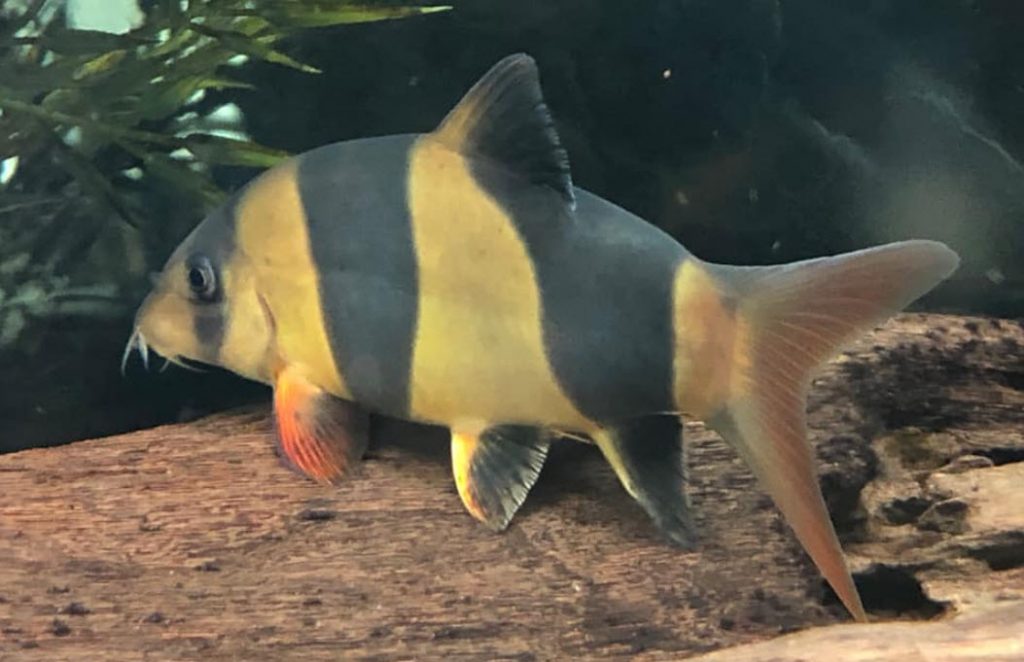
Further information on the topic of polishing filtration can be had by clicking the following link:
6.4.2. Polishing Filtration
Note that this water clarity and fish health issue is extremely important to fish from the blackwater Amazon like discus, rams, neons, apistos, and uaru. This is covered in some depth in this link:
17.3. Blackwater Fish
.
Return to Filtration Menu
.
Aquarium Science Website
The chapters shown below or on the right side in maroon lead to close to 400 articles on all aspects of keeping a freshwater aquarium. These articles have NO links to profit making sites and are thus unbiased in their recommendations, unlike all the for-profit sites you will find with Google. Bookmark and browse!
.

Leave a Reply